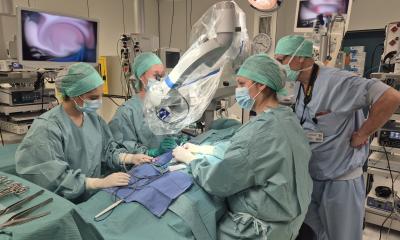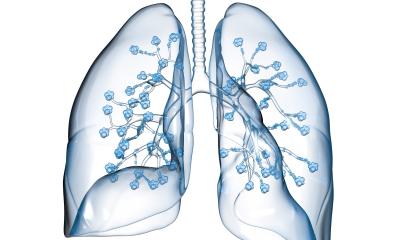TAVI's unsung hero
The Danish inventor of an aortic valve for transcatheter implantation (TAVI) gains recognition for his achievement by colleagues within the European Society of Cardiology

the valve and his father, whose life it saved

the valve and his father, whose life it saved
A stupid idea came home to Denmark last year in a brilliant stroke that saved the life of an 86-year-old man. The idea was for a balloon-inflated aortic valve that could be implanted using a guide wire passing through the femoral artery instead of openheart surgery. The dying man who received the valve was Jorgen Rud Andersen, the father of the inventor of transcatheter aortic valve implantation (TAVI), Henning Rud Andersen MD. The success of that procedure, which gave back a robust life to his father, was a personal triumph that closed the circle on a journey that began for Dr Andersen in 1988 in Phoenix, Arizona. Still in training as an interventional cardiologist that year, he was inspired by a presentation of coronary artery stents. Why not make the stent bigger and place a valve inside, he asked. No one was listening, so he built such a device himself, patiently bending wires to create a stent and buying pig hearts from the local butcher shop for the aortic valves. He then built a transcatheter delivery device inspired by the Cribier-Letac balloon catheter pioneered in France during the 1980s for balloon aortic valvuloplasty (BAV) by Alain Cribier MD. From conception to proof-of-concept took Andersen just 75 days. Today, TAVI valves, placed in more than 50,000 patients, range in sizes from 29 French down to 18 French. Dr Andersen’s hand-made valve, which he successfully placed in a pig’s heart, measured an enormous 41 French with rough surgical knots stitching the porcine valve to the metal frame.
A long journey to success
Presenting a poster demonstrating the feasibility of the idea at international conferences proved to be a lonely, discouraging experience, he said, attracting the attention of no one. The rejection was complete when his paper describing the experience was turned down by the leading heart journals. Yet, this idea, most kindly described as a low priority, caught the attention of one colleague, Patrick Serruys, editor of the European Heart Journal who attended Andersen’s presentation to the Danish Cardiology Society in 1990 and accepted the paper for publication in 1992. For Andersen, the journey ended in 1995 when he was granted a patent, which he sold to a start-up company called Percutaneous Valve Technologies led by Dr Cribier. ‘At that stage, I was convinced the idea was dead,’ Dr Andersen recounted to colleagues in an article published by the University of Aarhus. ‘The task was too big for us. We tried, but it was impossible. ‘The only thing that I regret a bit is that I did not contribute to developing the idea until it could be used in humans. I would have liked to have been part of that,’ he said. Dr Cribier’s company was greeted with even greater resistance on the part of industry, with one executive famously calling TAVI ‘the most stupid project ever heard of’. Nevertheless, the start-up persisted, finally finding an industrial partner to further develop the valve and its delivery system, leading to a successful firstin- man implantation in April 2002. The Andersen patent was acquired by Edwards Lifesciences and today is the foundation for the Sapien valve that won the CE mark in 2007 and approval from the American FDA in 2011. This year a joint task force of interventional cardiologists and heart surgeons included the TAVI procedure in guidelines, recommending its use for patients like Andersen’s father.
02.11.2012











